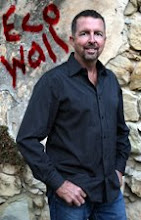Question: There’s so much stuff about “green this and green that.” Green sounds like just a fad to me. Seems everyone’s jumping on the green bandwagon. I drive a Prius and I use fluorescent bulbs, but this seems like small potatoes to me. Who’s going to make a real difference in America’s green scene? Can anyone bring about real change?
EcoWall: First, thank you for doing your part to reduce your energy use. If everyone replaced their incandescent light bulbs with fluorescents America would save hundreds of millions of barrels of oil a year.
Since the birth of the environmental movement right here in Santa Barbara back in 1969 there have been hundreds of green organizations in the US. The problem was there was no national effort given to address the country’s greatest energy hog – no, it’s not the car. It’s buildings.
Buildings consume more than 30% of the nation’s total energy and 60% of our electricity annually. The annual U.S. market in green building products and services was over $7 billion in 2005 – today it’s over $12 billion.
In 1993, the U.S. Green Building Council (USGBC) was founded to focus the building and construction industry’s vision for its own transformation to high-performance green building. Today, it includes more than 17,846 member companies and organizations. In the past five years USGBC’s membership has quadrupled.
The non-profit organization is composed of leaders from across the building industry working to advance buildings that are environmentally responsible, profitable and healthy places to live and work. It’s USGBC’s vision to make a change quickly, too. According to their website (www.USGBC.org), their goal is to “guide the creation of buildings and communities that will regenerate and sustain the health and vitality of all life within a generation.”
The kingpin program that will make this change come about is LEED certification, which stands for Leadership in Energy and Environmental Design. LEED provides a rating for buildings based on human and environmental health, sustainable site development, water savings, energy efficiency, materials selection and indoor environmental quality.
Nationally, more than 4.2 billion square feet of building space are currently involved with the LEED program. When buildings are built to LEED's rigid standards we will see significant improvement and outcomes in America's green efforts.
Question: Isn’t green building expensive? It doesn’t make sense during the economic crisis. Isn’t it just for the wealth homeowners?
EcoWall: No, the facts indicate the opposite. According to McGraw-Hill Construction's 2008 SmartMarket Report, "The Green Home Consumer," 70% of home buyers are more or much more inclined to buy a green home over a conventional home in a down housing market. That number is even higher, 78%, for those earning less than $50,000 a year, showing the increasing access to green buildings for all members of our society. In fact, 56% of respondents who bought green homes in 2008 earn less than $75,000 per year; 29% earn less than $50,000.
One of the best reasons to build green is economy. If a home is planned for green building in the initial design phase the total cost of construction may be 5% more. For a $300,000 construction cost that means building high-efficiency green may cost $15,000 more. This initial investment can be reduced with tax credits and energy company rebates.
When one considers that this completed home is saving 50% on energy costs the initial investment would be recouped in just five years. Every year after that is cash saved. Multiply these savings by millions of Americans and you are talking about a major reduction in reliance on foreign oil, as well as reducing the effects on global warming.
Building green is not only affordable, but it's the right thing to do.
Subscribe to:
Post Comments (Atom)

No comments:
Post a Comment